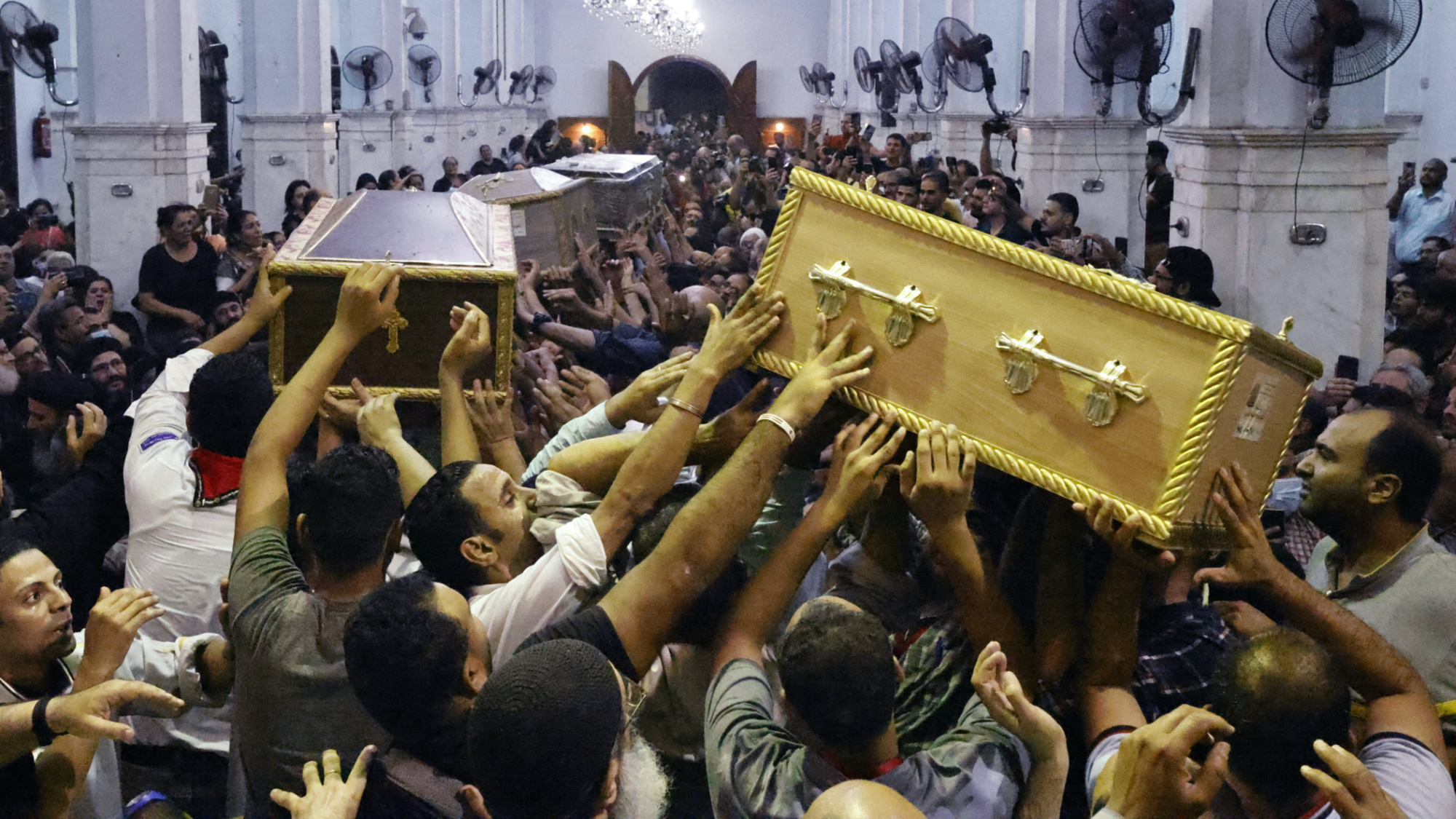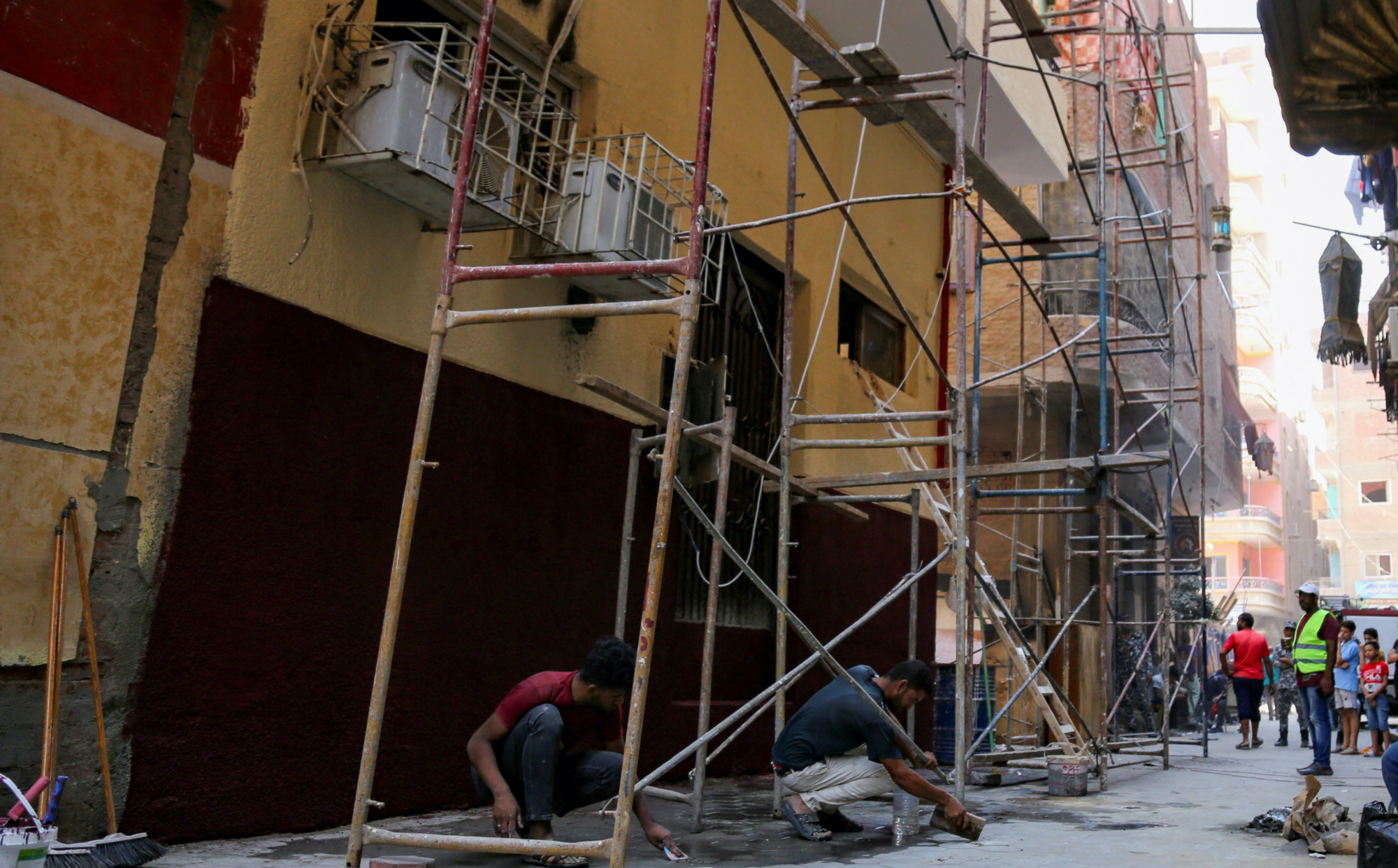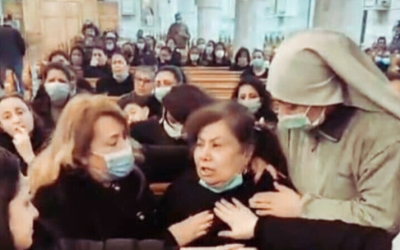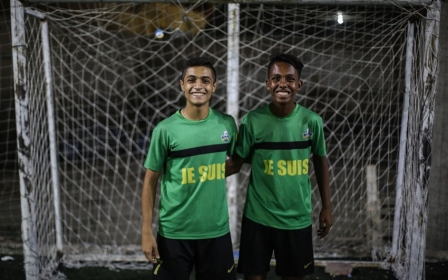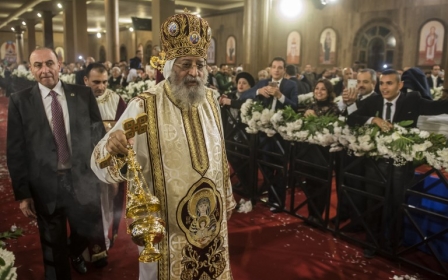Egypt: Anger and grief as Coptic families mourn church fire victims
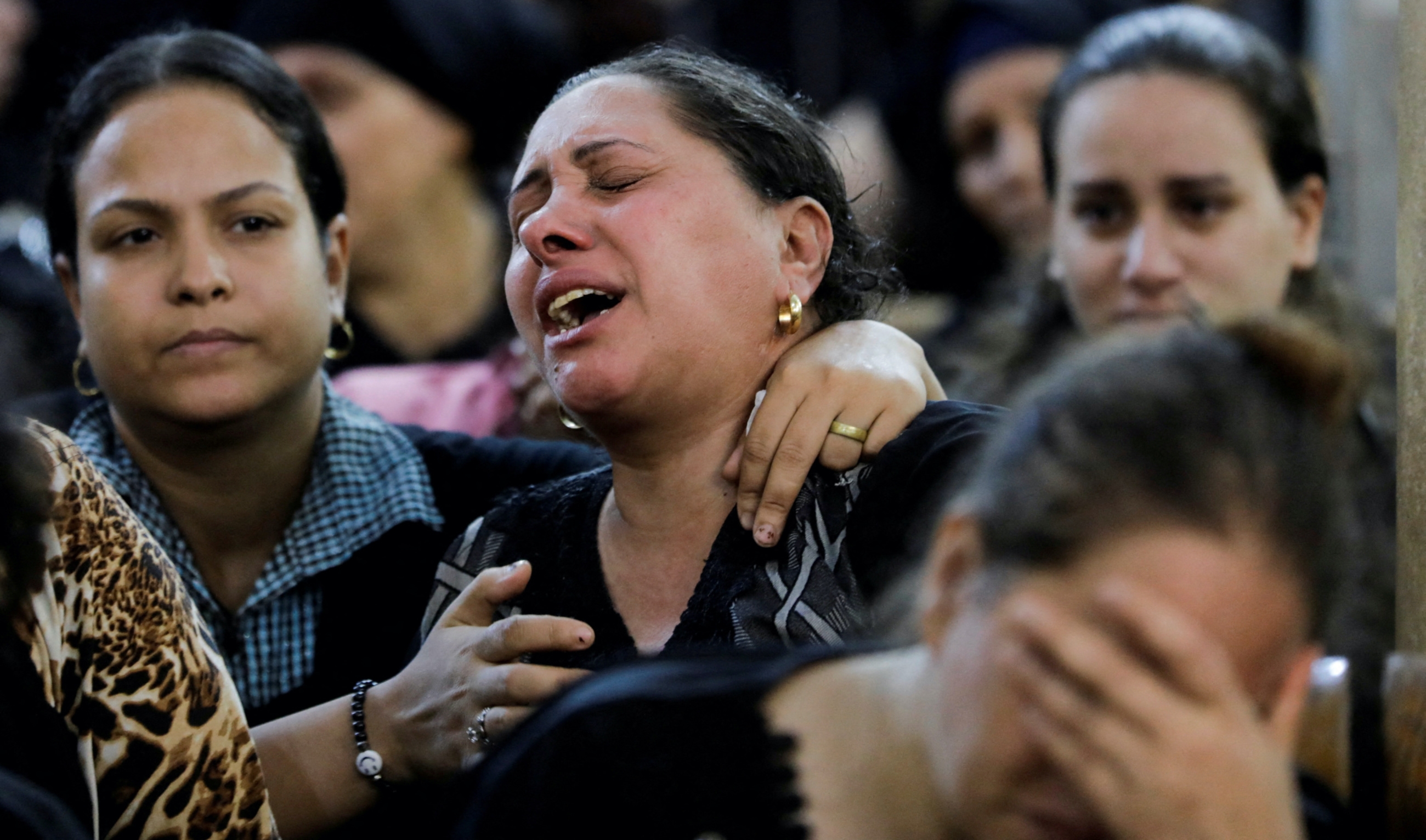
As funerals and private gatherings continued to be held to mourn the 41 victims who were killed in a blaze that engulfed a Coptic church in Egypt's Giza on Sunday, witnesses and family members are tormented between grieving and holding officials accountable.
Health officials said that all the deaths were caused by suffocation from the smoke that enveloped the building after a malfunction struck an old air conditioning device. Fourteen of the victims were children.
Eyewitnesses told Middle East Eye that the worshippers who were crowded inside the Abu Sifin church to pray and attend the Divine Liturgy service did not immediately notice the heavy black smoke spreading across the residential-style multi-story building.
Nahed Awad, a 56-year-old housewife, said she was one of the first neighbours to see the fire.
'Most of the worshippers had sent their children to the kindergarten upstairs. Mothers were yelling their children’s names. It was horrible'
- Mahitab, eyewitness
With the short distance between rooftops in the neighbourhood, men and children from her household were able to cross over to the church’s roof. They saw children and teachers crowding the nursery on the church’s second floor, trapped and unable to move due to the black smoke.
New MEE newsletter: Jerusalem Dispatch
Sign up to get the latest insights and analysis on Israel-Palestine, alongside Turkey Unpacked and other MEE newsletters
Awad and many others said that they had called the fire department and the police for help. But the first ambulance only arrived two hours later, they said.
People in the area flocked to the church to try and save the lives of the worshippers inside. As the smoke intensified more residents began to climb into the building, only to find the nursery children still trapped on the second floor.
Minutes later, worshippers started to hear the screams from the upper floor, Awad said.
“That is where the panic started, as most of the worshippers had sent their children to the kindergarten upstairs,” Mahitab, 34, another resident, told MEE. “Mothers were yelling their children’s names. It was horrible.”
Mahitab and others were able to rescue several children from the roof and from the main entrance.
“Around 12 children got out and we were able to help them breathe and calm them down,” she said.
Other children were not so lucky.
“Me and many of the neighbourhood’s men tried to do CPR on other kids but they had already gone to heaven,” Mahitab recalled as she collapsed from crying.
Two blocks away
The Abu Sifin Coptic church lies in the overcrowded working-class Moniera district, in Imbaba.
While it is located only two blocks away from a fire brigade unit, still it had reportedly taken firefighters an hour and a half to reach the scene, according to eyewitness accounts, due to the church’s overcrowded location.
“In the neighbourhood, a lot of the people were crying and screaming - Muslims and Christians alike,” Mahitab said. “Even some of the shopowners who were known to be a little sectarian or affiliated with radical Salafis started to give away water, blankets and ice.”
Four eyewitnesses said that the authorities only started to intensify their presence with ambulances, firefighters, and police officers three hours after the smoke was first detected, a claim that was denied by pro-state media outlets who highlighted the performance of officials during the crisis.
A source in the interior ministry’s media office told MEE that since the fire, the focus in the media has been to deny any negligence or slow response of police forces, which the fire department is a part of.
An eyewitness, who preferred not to give his name, said that as the bodies started to pile up outside the church’s doors, “one ambulance began loading more than three bodies at a time, and sometimes four and five.”
He claimed that a high-ranking police officer first arrived with two ambulances and a police truck, and communicated the severity of the situation to his superiors.
Several church officials, including Pope Tawadros, criticised social media users who blamed officials for their slow response and negligence.
The children never came back
Esnad bint al-Maqds, a woman in her 40s, had sent her two children who died in the fire to the Abu Sifin Church on Sunday, with plans of having them attend the grand mass on Wednesday.
In a massive gathering outside her house in Imbaba on Monday night, bint al-Maqds was heard screaming and blaming herself for the death of her children.
“Everyone is trying to calm her down, but she is insisting that she is the reason behind their deaths,” her cousin, Emad, told MEE.
'He was resisting but the ambulance was late and he died in my arms, and my mother was next to him'
- Mina Adel
“No one can believe that children went to pray and never came back.”
Emad says his family extends from Upper Egypt, an often male-dominated society where masculinity is seen as unshakable.
“I have never seen this amount of men crying in my life. Everyone feels so helpless,” he said.
“We want to reassure ourselves that they are now in a better place.”
Sundays are usually a popular day for local churches as they often host Sunday schools to educate and proselytise younger Copts.
In the majority of Coptic churches, in addition to being a place of worship, the spaces often include kindergartens, entertainment centres, clinics, theatres, and communal areas for churchgoers.
In recent decades, churches have become a refuge for Coptic Christians away from marginalisation, sectarianism, and violence.
Pictures of smaller coffins entering the funeral house were widely shared on social media, rousing the sympathies of Egyptians.
Upon hearing the news, Mina Adel, a man in his 20s, rushed to the church to check on his parents and saw his father was alive.
“He was resisting but the ambulance was late and he died in my arms, and my mother was next to him,” said Adel, whose mother also died.
“I arrived and found dozens of bodies on the floor on carpets. The dead bodies were on the left, the injured were on the right.
“Both wanted to go and pray together. I imagine that they are like newlyweds going to heaven. Hopefully, they will continue to pray for me in heaven.”
Preventable deaths
Hours after the fire, strict measures were imposed in the vicinity of the church. Police forces blocked roads leading to the church, banning reporters from interviewing eyewitnesses and residents.
Inside the church, construction teams affiliated with the military started the renovation processes hoping they can finish the job within a week. The entrance of the building has been covered with a big Egyptian flag.
'A lot of the deaths were [caused by] suffocation and not burns. Some could have been saved'
- Layali
In the street next to the Abu Sifin church, screaming and weeping could be heard.
“My grandmother Magda Nabih, 61 years old, my aunt Irene Atef and her children, and my aunt Mirna Atef went to heaven,” lamented Layali, whose stricken family had lost six members in the fire.
She told MEE that she blames the government for the delay in the rescue response.
“A lot of the deaths were [caused by] suffocation and not burns. Some could have been saved,” she said.
The fire and the deaths brought back the questions of legalising the construction of churches, the obstacles that Christians face to renovate their churches, and how society discriminates against Coptic places of worship.
In 2016, Egypt passed a law to regulate the construction of churches, but many Coptic Christians and rights organisations say that it does very little to practically end discrimination against Copts, who represent 10 percent of Egypt's over 100 million citizens, most of whom are concentrated in Upper Egypt.
Abanoub Fawzy, a computer science student from Minya, said that many churches and places of worship are forced to be in residential areas and in normal buildings in order to escape harassment from radicals, and a big number of them are awaiting government approval.
Fawzy had come from Minya to attend the funeral of his friend, Mina, who died in the fire.
“Copts are forced to live in the shadows and worship in silence. I speak from experience since in Minya several churchgoers gather in private residences to pray, but end up being attacked by radicals.”
This article is available in French on Middle East Eye French edition.
Middle East Eye delivers independent and unrivalled coverage and analysis of the Middle East, North Africa and beyond. To learn more about republishing this content and the associated fees, please fill out this form. More about MEE can be found here.


